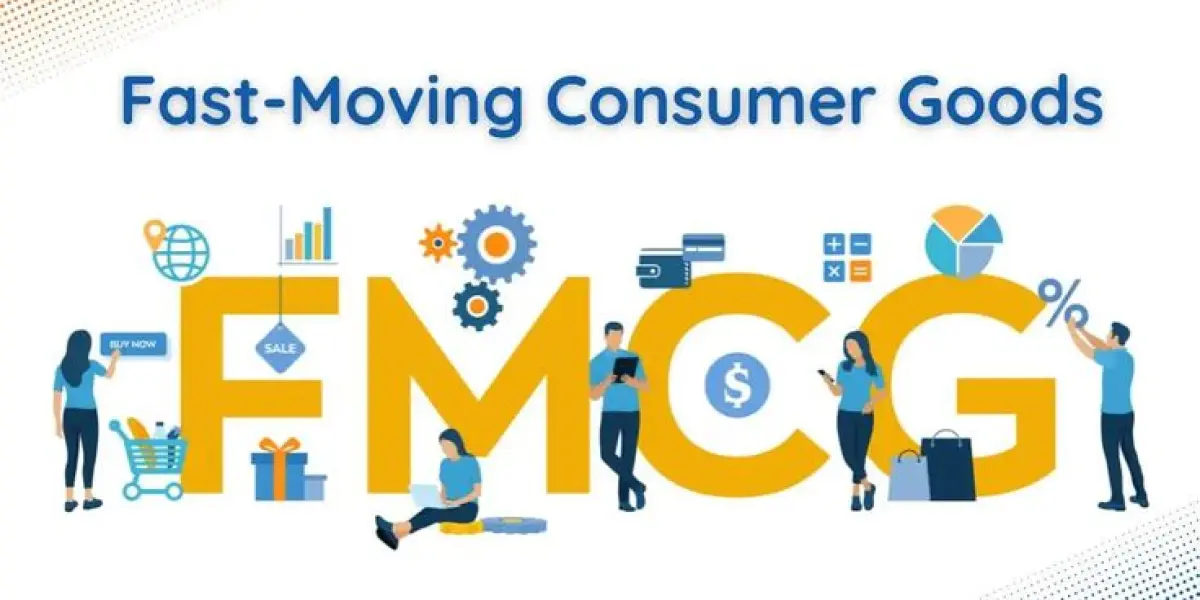
- Mohil Detroja
- 04-Aug-2025
- Other
The Hidden Reasons Behind FMCG’s Slowdown in India
The Indian Fast-Moving Consumer Goods (FMCG) sector was once on the track of growth, but recently, it has experienced a decline. Deep diving into the factors impacting this growth highlights underlying challenges that might derail the sector's long-term trajectory. Investors are regularly inquiring, “why FMCG stocks are falling?” Well, the answer is pretty more complex than a simple economic blip.
We need to believe that this slowdown isn’t just temporary. Changing consumer habits and growing competition in the market are the two culprits here!
Inflationary Headwinds and Eroding Purchasing Power
Many experts look upon persistent inflation as the biggest contributing factor to the FMCG slowdown. India is an economy where a huge percentage of the population operates on tight budgets. So, a direct rise in the prices for essential goods heavily decreases non-compulsory spending. Consumers are becoming more and more price-sensitive.
A research paper by IJRPR notes that 85% of respondents reported noticing considerable price hikes in FMCG products over the past year, with 60% reducing the quantity or frequency of their purchases, and 25% shifting to smaller pack sizes.
“Shrinkflation” and switching to cheaper products are clear signs of consumers struggling with higher living costs.
FMCG companies have tried passing on higher input costs to consumers, but it has often come at the expense of volume growth. The delicate balance between maintaining margins and retaining market share becomes a tightrope walk.
Raw materials become cheaper when the commodity inflation is low. This encourages smaller, local brands to flood the market with low-cost products. This further boosts the market competition.
The Fading Rural Growth Story
From Growth Engine to Slowing Momentum
Rural India has played the role of the growth engine for the FMCG sector for long. Earlier, there was a huge untapped potential because of a vast population, but now, the story is shifting.
Historically, rural India has been the growth engine for the FMCG sector. With a vast population and rising aspirations, it presented massive untapped potential. But the story is shifting. Although some reports suggest rural demand may be surprisingly resilient compared to urban areas, overall consumption has been sluggish for a while.
Some reports say that people in rural areas might still be buying things more steadily than those in cities. However, the overall spending has been slow for some time.
What’s Driving the Slowdown?
Unpredictable monsoons have impacted agricultural income, and due to this, the disposable incomes in rural households have decreased.
FMCG giants like ITC and Dabur, who have good enough grip over the rural markets for decades, have acknowledged the challenges. However, they remain cautiously optimistic.
Thanks to better weather predictions and help from the government, there’s some hope for rural areas. But rural markets still make up about 36% of all FMCG spending in India. It’s definitely going to be a big worry for the industry if they slow down.
Shifting Urban Consumption Patterns
It’s not just rural India facing problems with spending. Many cities are also seeing a drop in demand. City shoppers used to do a lot of trial and error with the new things and spent more. But now, they’re more careful with their money. This is happening because of a few reasons:
Premiumization Saturation and Value Seeking: Premiumization was a key trend. However, a saturation point has reached in some categories. Both rural and urban buyers are seeking value for money more than ever. Hence, they’re often giving more priority to private labels or more affordable alternatives.
Digital Disruption and D2C Brands: The fast growth of e-commerce and quick commerce platforms has boosted Direct-to-Consumer (D2C) brands. These agile players often focus on niche categories and specific consumer needs. The best thing? They can bypass traditional distribution channels and reach consumers directly. Many successful emerging FMCG brands are targeting premium consumer markets, and this shift is impacting the market share of the established competitors.
Health and Wellness Consciousness: The awareness of health and wellness is growing day by day among Indian consumers. This is increasing the demand for organic and natural products. FMCGs are focusing on the same by adapting by diversifying their product offerings. Many are modifying ingredients, and this also means companies must invest in R&D and adjust their supply chains to stay competitive.
The Rise of Local and Regional Players
Small and regional brands are growing at a good pace, and this has made the competition in the FMCG industry fierce. These local players often have a better understanding of regional preferences. They have lower operational costs, due to which they’re able to offer products at more competitive price points.
Large companies saw sales volume increase of 2-3% in urban areas. In contrast, smaller brands comprising almost two-thirds of the market grew 5-7%. This has made giants like HUL and Nestle rethink their strategies. Hence, the market is experiencing price reductions and higher marketing investments.
A big percentage of mass consumers are moving more towards buying unbranded products for value, and this "slow tectonic shift" is reshaping the market.
Adaptation and Innovation Make the Way Forward
We can describe the slowdown in the FMCG sector as a wake-up call for established players. Companies need to adopt different approaches to navigate through this turbulence safely:
Deep Dive into Consumer Insights: It is very important to understand the evolving preferences of both urban and rural consumers. So, the focus should be on value-for-money products and sustainable packaging.
Agile Product Development and Portfolio Rationalization: Companies need to be nimble in launching new products and adapting existing ones to meet changing demands. This includes focusing on core categories that resonate with consumers.
Strengthening Rural Distribution and Engagement: Companies need special strategies, such as including smaller pack sizes and affordable pricing to rebuild the rural demand. Communication should also be good enough the address the unique needs of rural consumers.
Embracing Digital and D2C: Investing in e-commerce capabilities and building direct-to-consumer channels will be vital to reach tech-smart consumers.
Cost Optimization and Operational Efficiency:
Cost Optimization and Operational Efficiency: Inflationary pressures are going to persist. Hence, companies need to focus on optimizing their supply chains and managing input costs effectively to protect profit margins.
Strategic Alliances and Acquisitions: Collaborating with or acquiring smaller D2C brands of specific niches can offer a shortcut to tapping into new consumer segments.
The Role of Government Policies and External Shocks
Undoubtedly, government will also have to put its hand up to mitigate global economic shifts and have a positive influence on FMCG sector’s slowdown. The truth is, regulatory changes such as higher GST rates on packaged goods and increased compliance burdens have squeezed margins. Simultaneously, geopolitical tensions and crude oil price fluctuations have led to cost pressures.
Experts believe that Government schemes like PMGKAY have just provided the offered temporary relief to rural demand, but not enough of structural support.
Policy stability is going ot be vital for a strong long-term recovery. Infrastructure development and special incentives can encourage rural consumption.
Conclusion
Indian FMCG sector has a humongous consumer base. Hence, it remains fundamentally strong. The current slowdown demands strategic innovation and a keen understanding of the top factors that reshape the Indian consumer landscape.
Companies need to successfully adapt to these new realities to emerge stronger in the years to come. FMCG sector in India has a bright future, and there’s a lot to reap for the companies.
